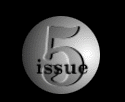But though it may be simpler to describe exceptions to Mulvey's work in recent films, it is worthwhile to examine alternative looks and pleasures that may also have existed in the classic Hollywood era that Mulvey describes. Though 1930-1960 was a period where patriarchy may not have been under open attack, to see gender relations as totally stable seems simplistic. American feminism did not spring fully formed from the head of Zeus in 1968, but evolved from questioning of constructed gender roles dating back to Elizabeth Cady Stanton, if not before. The radical movements of the 1930s allowed space for independently minded women to actively work for societal change; Eleanor Roosevelt modeled the obligation of women to get involved during the Depression. And with World War II, women entered the workforce in large numbers, often in jobs previously closed to women. The '30s-'40s was a period when women proved their ability to work in partnership with men outside of the home. That Hollywood could consistently create images of women as passive objects during a period when real women were becoming more difficult to contain seems unlikely--especially if Hollywood wanted to sell tickets to these women with the freedom and income to go to the pictures.
Secondly, filmmaking is a multiple medium, created jointly by writers, cameramen, actors (which includes actresses), editors, etc., as well as the director. The film itself is made of multiple looks, with multiple scenes and shots. To assume that all of these elements would create one, unassailable, controlling look also seems problematic. Even if these multiple looks are generally subsumed by one look, the success of the masculine gaze in subsuming these looks would vary from film to film, depending on the collaborators and other elements inscribed within the film.
Additionally, many films of this era have now been "canonized" as texts of literary value, with their directors dubbed as "auteurs." A common requirement of literary value is a text's ability to bear multiple readings, to contain a polysemy which a single, controlling look would deny. Though standard "movie factory" productions might be expected to conform most closely to Mulvey's description, more complex work in the era would be expected to reflect existing tensions within patriarchy and phallocentric pleasure, and to be more full of contradictions. In "Visual Pleasure," Mulvey focuses on the work of auteurs Josef von Sternberg and Alfred Hitchcock, without noting the contradictions contained within their oeuvre.
In The Women Who Knew Too Much, Tania Modleski explores barely contained incoherences caused by female characters in films by Alfred Hitchcock: "his films are always in danger of being subverted by females whose power is both fascinating and seemingly limitless" (1). Modleski examined Hitchcock to understand why female spectators received so much pleasure from the films of a "misogynist": she contends that Hitchcock's unresolved fascination and fear of women led him to create gender roles so complex that his female characters "remain resistant to patriarchal assimilation" (3). Through Hitchcock's use of a "feminine" perspective in some films and frequent portrayals of ambiguous sexuality, Modleski argues that Hitchcock forces male and female spectators alike to experience (the discomfort of) their "bisexual" positions.



